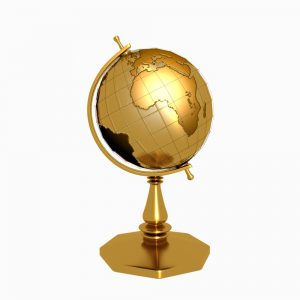

The dance of diplomacy
by Anita Mendiratta
September. A month in which the world shifts its focus onto the United Nations.
The 72nd Session of the UN General Assembly has commenced in New York. The period of the 12th through to the 25th September brings together literally thousands of diplomats, direct reports, decision makers, donors, delegates and media determined to stay ahead of the issues that form the agenda around which 193 member states unite.
Across the city national flags from across the world splash out their colors, while sirens and blue lights signal VIPs in transit. Mobility is challenged both on the main roads and in the meeting rooms. Getting from A to B whether a place, a policy or a principle, can and does demand careful maneuvering.
It’s all about diplomacy.
To see diplomacy in action is to watch a slow, subtle dance unfold. The steps are ever so carefully choreographed – the movement of a hand, blink of an eye, shift of a shoulder…each a form of communication. Together, apart, together, together, together, apart. Nothing ever stays the same. The tempo of the music, the style of the steps – each and every motion becomes an expression of interests, intentions, intrigue.
For many in the audience, the dance can become frustrating to watch.
Who is leading? Is the follower happy to do so, or actually wanting to be change the song, seeking to lead? Why such hesitation?
Being ever so careful not to step on toes, the dance works its way through. Externally, it appears a graceful management of energy and emotion. Below the surface, however, diplomacy can in fact be an invisible, full body sport.
Such was the case recently when another UN General Assembly took place, this time in the global Travel & Tourism space. The stage: Chengdu, China. The occasion: the 22nd General Assembly of the UNWTO – the United Nations World Tourism Organization.
Over 1300 global tourism leaders came together to shape a shared future of one of the world’s most important sectors – a sector that is today responsible for 1 in 10 jobs worldwide, 10.2% GDP, 30% Services Exports. The stats are one side of the powerful story. The other: the ability of Travel & Tourism to act as a priceless vehicle for preserving cultures and identities of peoples across the globe, protecting natural environments and communities, and promoting peace through the alchemy of understanding and respect that travelling unlocks.
Over the course of the UNWTO GA week, statutory meetings put the plan of work of the organization front and center. Initially meeting by region, the global collective then came together to tackle critical issues of the day. Of highest priority: confirmation of the Secretary General-elect, the individual who would define the course and culture of the organization for at least the next four years, commencing January 1, 2018. But this was no usual nominee confirmation process. These were no simple, easily resized shoes to fill.
Who would, who could, possibly succeed one of the finest, wisest and sharpest Secretary Generals that the organization, perhaps even the UN system, has ever had at the helm? Organizational meaning, momentum and unity were all on the line. Who would be able to smoothly, confidently cut in on, and take over, this critical dance with the same style and substance?
When the time came to confirm the leader charged with the responsibility of leading the organization, the diplomatic dance took a dramatic twist. The music could not have been more deafening, more penetrating. Intense debate, with unprecedented moves, at times left the dance floor boards close to cracking. The floor that connected one and all started to splinter away. Fatigue, frustration and fury – powerful, deep bass notes muting any trebles trying desperately to break through.
And yet somehow, somehow, a collective rhythm was found. The mental gymnastics spontaneously, diplomatically performed by the outgoing Secretary General to shift individual styles into a line dance of 1300 were exhausting to even watch. With fierce strength of spirit determined not to let the floor fall through, finally, masterfully, a piece of music, a proposed way to move forward, was found. Its chords penetrated people’s hearts, shifting their steps from ‘I’ to ‘we’. It was a United Nations show of truly united nations.
So rightly, so deservedly, as the music stopped, a wave of standing ovation began. Instantly, the thick, heavy heat that had built up in the room was pushed out as fresh, pure air washed through. The music hushed…the tears fell.
Crossing the globe, the steps that will carefully, cautiously, thoughtfully unfold in New York this week will, no doubt, prove to be history-making. Thankfully we have within the global community a few, just a few, masterful dancers of diplomacy who not only understand the steps that need to be choreographed to reach a truly inspired, uniting outcome, they seek to teach them.
Dr. Rifai, please take a bow.
© Anita Mendiratta
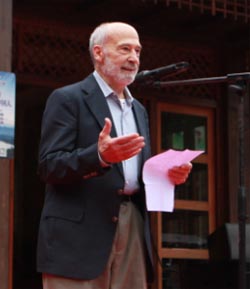
IIPT and China Chamber of Commerce Peace Park project after UNWTO General Assembly
| Peace Through Tourism is now including China. After the recently concluded UNWTO General Assembly in Chengdu, the International Institute for Peace Through Tourism launched the IIPT Global Peace Parks Project with the dedication of Pu’er Sun River National Park as an IIPT International Peace Park in collaboration with the China Chamber of Tourism.
China Chamber of Tourism Chairman, Peter Wong stated: “Pu’er Sun River National Park is the perfect site for the first IIPT International Peace Park in China as it is a national model of the “wild beauty of nature” covering an area of 216 square kilometers with a wide variety of plants and 812 species of wildlife. In is also a model of people in harmony with nature showcasing the local culture of the diverse ethnic people of the region.”
In his Peace Park dedication address, IIPT Founder and President Louis D’Amore said: “It is truly an honor to be here with you today as we dedicate this IIPT International Peace Park – the first in China, just a few days before the UN International Day of Peace, September 21 – and in support of UN Sustainable Development Goal 16 which calls for peaceful – inclusive and just societies. As we dedicate this park, we also begin what I am sure will be an important and fruitful relationship between the China Chamber of Tourism and the International Institute for Peace through Tourism; a relationship that will bring more peace parks in China and contribute towards the vision of tourism becoming the world’s first global peace industry – and the belief that every traveler is potentially an ambassador for peace.”
The Pu’er Sun River National Park focuses on the theme “wild beauty of nature” in combination with the local culture and the harmony of humans with nature. By operating profit-making projects within the Park, it is able to effectively provide sustainable protection for precious and unique natural and cultural resources. The Pu’er Sun River National Park also serves as a Forest Ecological System Science Education Base; Flora and Fauna Rescue Base; and Global Tourist Attraction for visitors to experience nature and the Pu’er Culture.
Members of China Chamber of Tourism following the unveiling of the stone plaque The IIPT Global Peace Parks project has a goal of 2,000 Peace Parks circling the earth by 11 November 2018 – the 100th Anniversary of the end of World War I. The four year commemoration of the World War I Centenary, with its theme of “No More War” – has been supported by IIPT since its launch in 2014. IIPT is proud to have United Cities and Local Governments (UCLG) as a partner in its global campaign. UCLG is the united voice and world advocate of democratic local self-government with a global network of cities, local and regional governments representing 70% of the world population. UCLG goals include contributing to the achievement of the SDG’s, Paris Agreement, Sendai Framework for Disaster Risk Reduction, and New Urban Agenda for Sustainable Urban Development. The Global Peace Parks Project builds on the success of IIPT’s 1992 “Peace Parks across Canada” Project commemorating Canada’s 125th birthday as a nation. IIPT conceived and implemented “Peace Parks across Canada” which resulted in 350 Peace Parks being dedicated by cities and towns from St. John’s, Newfoundland on the shores of the Atlantic, across five time zones to Victoria, British Colombia on the shores of the Pacific. The Peace Parks were all dedicated on October 8, 1992 as a National Peace Keeping Monument was being unveiled in Ottawa and 5,000 Peacekeepers passing in review. Each park was dedicated with a ‘bosco sacro’ – a peace grove of 12 trees, symbolic of Canada’s 10 Provinces and 2 Territories, as a link to one another, and a symbol of hope for the future. Of the more than 25,000 Canada 125 Projects, Peace Parks across Canada was said to be the most significant. IIPT International Peace Parks have since been dedicated as a legacy of each IIPT International Conferences and Global Summits. Notable IIPT International Peace Parks include Bethany Beyond the Jordan, site of Christ’s baptism as a legacy of the Amman Summit, 2000; Victoria Falls, as a legacy of the IIPT 5th African Conference, 2011, subsequently re-dedicated as the featured event on Opening Day of the UNWTO 20th General Assembly 2013, co-hosted by Zambia and Zimbabwe; and Medellin, Colombia, dedicated on Opening Day of the UNWTO 21st General Assembly. Photo is Dr. Kenneth Kaunda, first President of Zambia and UNWTO Secretary General, Dr. Taleb Rifai, planting the first of six olive trees during the re-dedication of the IIPT International Peace Park, Opening Day of the UNWTO 20th General Assembly. About China Chamber of Tourism The China Chamber of Tourism was formed in 2002 to include all sectors of the travel and tourism industry and related industries throughout China. It is based on a concept of “Pan Tourism” with the belief that tourism as a bond could connect and lead industries to develop co-operatively. Its core beliefs are “tourism is peace” and that world tourism calls for world peace; tourism is culture and the improvement of life quality. China Chamber of Tourism has achieved fruitful co-operation with UNWTO, WTTC, PATA – and now IIPT – enhancing the co-operation and exchange of Chinese and tourism enterprises of other nations. |
||
| About IIPT The International Institute for Peace through Tourism (IIPT) is a not for profit organization dedicated to fostering travel and tourism initiatives that contribute to international understanding, cooperation among nations, an improved quality of environment, cultural enhancement and the preservation of heritage, poverty reduction, reconciliation and healing wounds of conflicts; and through these initiatives, helping to bring about a peaceful and sustainable world. It is founded on a vision of the world’s largest industry, travel and tourism – becoming the world’s first global peace industry; and the belief that every traveler is potentially an “Ambassador for Peace.” |
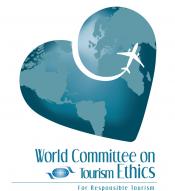
The mandate of the World Committee on Tourism Ethics renewed until 2021
With a leading role in the recent approval of the Framework Convention on Tourism Ethics by the UNWTO General Assembly held in Chengdu, China, the composition of the World Committee on Tourism Ethics has been renewed.
In order to continue advancing the important work of this subsidiary organ of the UNWTO General Assembly, the mandate of the outgoing members of the World Committee on Tourism Ethics was renewed until 2021, with Pascal Lamy continuing to chair the Committee.
Joining the four Members whose mandate was set to end in 2019 – Yoshiaki Hompo (Japan), Fiona Jeffery (UK), Tanja Mihalic (Slovenia) and Eugenio Yunis (Chile) – will be Gede Ardika (Indonesia), Jean Marc Mignon (International Social Tourism Organization) and Ron Oswald (The International Union of Food, Agricultural, Hotel, Restaurant, Catering, Tobacco and Allied Workers’ Associations) as Committee Members, and Hiran Cooray (Sri Lanka), Suzy Hatough (Jordan) and Günnur Diker (Turkey) as Alternates.
The only new member joining the World Committee on Tourism Ethics four a four-year term starting 17 September 2017 is Rosette Chantal Rugamba, Founder and Managing Director of Songa Africa and Amakoro Lodge (Rwanda).

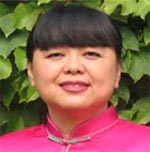 Dignitaries participating in the ceremony included Madame Wang Ping, Founding Chairman, China Chamber of Tourism (Photo on the left); Mr. Peter Wong Man Kong, Executive Chairman, China Chamber of Tourism; Mr. Yu Jinfang,Co-founder and Developer of Pu’er Sun River National Park; Mrs. May Jinfang, Co-founder and Developer;
Dignitaries participating in the ceremony included Madame Wang Ping, Founding Chairman, China Chamber of Tourism (Photo on the left); Mr. Peter Wong Man Kong, Executive Chairman, China Chamber of Tourism; Mr. Yu Jinfang,Co-founder and Developer of Pu’er Sun River National Park; Mrs. May Jinfang, Co-founder and Developer;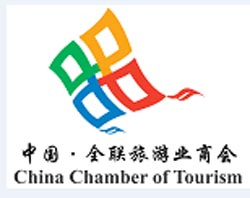 Mr. Carlos Vogeler, Executive Director, UN World Tourism Organization; Mr. Xu Jing, Regional Director for Asia and Pacific, UN World Tourism Organization; Hon. Gede Ardika, former Minister, Culture and Tourism, Indonesia; Helen Marano, Government and Industry Affairs Director, World Travel and Tourism Council (WTTC); Louis D’Amore, IIPT Founder and President and various city officials of Pu’er City.
Mr. Carlos Vogeler, Executive Director, UN World Tourism Organization; Mr. Xu Jing, Regional Director for Asia and Pacific, UN World Tourism Organization; Hon. Gede Ardika, former Minister, Culture and Tourism, Indonesia; Helen Marano, Government and Industry Affairs Director, World Travel and Tourism Council (WTTC); Louis D’Amore, IIPT Founder and President and various city officials of Pu’er City.
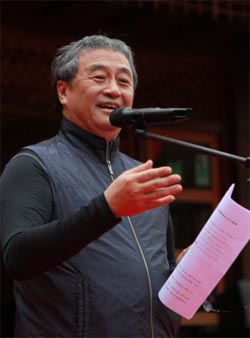 From top to bottom: Start of the Peace Park Dedication; China Chamber of Tourism Chairman Peter Wong giving his address followed by Louis D’Amore address (feature photo)
From top to bottom: Start of the Peace Park Dedication; China Chamber of Tourism Chairman Peter Wong giving his address followed by Louis D’Amore address (feature photo)

